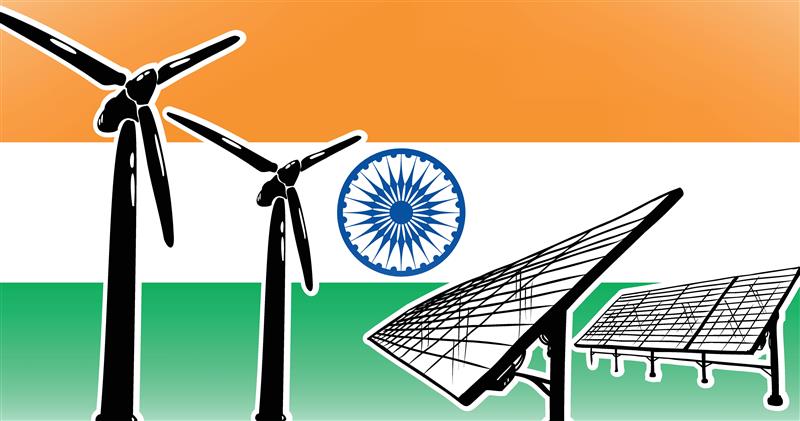The recently concluded 30th Conference of the Parties (COP30) in Belém, Brazil, shifted its focus from setting ambitious targets to implementation and delivery, earning the title of the ‘COP of Implementation.’
At every COP, energy transition sits at the heart of the overall narrative, given that the energy sector accounts for the largest share of global greenhouse gas (GHG) emissions. This was also highlighted in the thematic axes of the COP30 Action Agenda. Of the six thematic axes, three—transitioning energy, industry, and transport; transforming agriculture and food systems; and building resilience for cities, infrastructure, and water—focused on the delivery and implementation of targets, particularly in the energy sector. At the Center for Study of Science, Technology and Policy (CSTEP), our work in the Energy and Power Sector is built around exactly that: how we move from vision to action—anchored in subnational systems, powered by granular data, and driven by people.

At COP30, one clear message was that delivery occurs at the subnational level. While national targets are important for setting the ambition, they must be broken down into subnational goals and actions for effective implementation. As each state in India has a unique policy and regulatory environment, geographic needs, growth trajectory, renewable potential, and demand pattern, a one-size-fits-all national plan will only go so far. Also, electricity is a concurrent subject in India, allowing for both national policies and state-level implementation, underscoring the need to develop bespoke solutions tailored to each state’s specific requirements.
Realising this, CSTEP developed state energy transition roadmaps for various states across the country. Our roadmaps for Kerala, West Bengal, Punjab, and Assam highlight the need to add nearly 35 GW of non-fossil fuel capacity and 11 GW of storage across all four states. Such additions would double the share of renewable energy (RE) in these states’ energy mix. This would in turn reduce GHG emissions by 46% and the grid emission factor by 21% (from 2025 levels) by 2030.
COP30 emphasised systemic change in how we operate. The implementation gets hampered when we don’t have enough data to inform the decision. CSTEP thrives on evidence-based decision-making. For instance, under the scheme for solarisation of the agriculture sector, one of the challenges faced in effective implementation is the availability of suitable land parcels in states. CSTEP created the Agri-Solar Land Parcel Explorer tool that uses satellite/GIS data and filters for technical, social, and environmental criteria to identify viable parcels around existing substations.

Increasing the penetration of distributed RE (DRE) at the lower voltage levels could also be impeded by data unavailability. To expedite DRE implementation, states will need more granular data to understand feeder-level feasibility, load flows, constraints, and the investment decisions required for grid reinforcement. CSTEP’s ongoing impact assessment study of the 11 kV feeder for DRE integration is about creating that evidence—using real-world feeder data, GIS layers, and power-flow modelling to guide state DISCOMs on where and how much DRE can be safely integrated within the network.
COP30 objectives on multi-level governance and transitioning away from fossil fuels in a just, orderly, and equitable manner highlight the need to bring people to the centre of the transition—making sure decisions are shaped by communities, not just institutions. While this is commendable, it may not be enough. CSTEP is working on developing a broader framework for a just transition that goes beyond coal and includes the RE sector, making sure that the inequities of the past are not passed onto the RE future.
Another aspect of keeping people at the core is around demand-side flexibility. In India, discussions have just begun—how consumers can shift their behaviour to reduce peak demand and support the grid. However, the success of these discussions will depend on communities’ participation, consumer willingness to adopt flexible technologies, and how they are enabled to make informed decisions. To drive demand flexibility discussions, CSTEP is developing a cost–benefit analysis framework for Tamil Nadu’s consumer categories, ensuring that the implementation is people-driven.
Countries across the world face a dual challenge: how do we grow, modernise, and provide for citizens while reducing emissions and protecting ecosystems? This is especially important in countries such as India, where energy demand is still rising, and livelihoods depend on access to cheap, reliable power.
India’s clean energy transition should not be only about creating more capacity but also integrating it into the systems with strengthened grids and empowered consumers.
We at CSTEP are pleased to see that our four core research areas in the Energy and Power Sector—state-level planning, land tool building, grid modelling, and demand flexibility—ensure that states lead the transition, data inform decisions, and people are empowered. As COP30 reminds us, the future of energy is local, granular, and just. And that’s exactly where our focus is—and where India’s transition will continue to unfold.
More About Publication |
|
|---|---|
| Date | 2 December 2025 |
| Contributor | |
| Publisher | CSTEP |
| Related Areas | |
Get in touch with us at
cpe@cstep.in